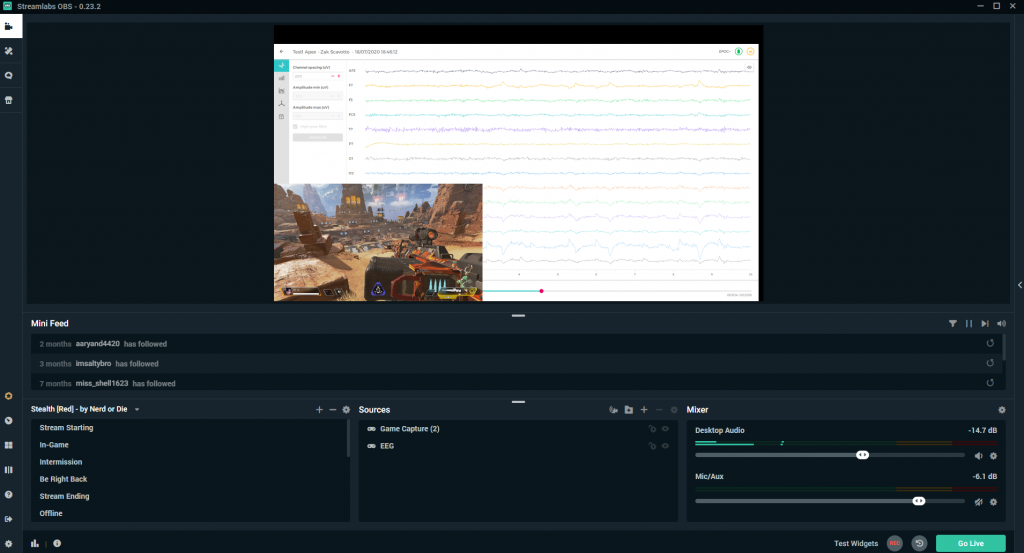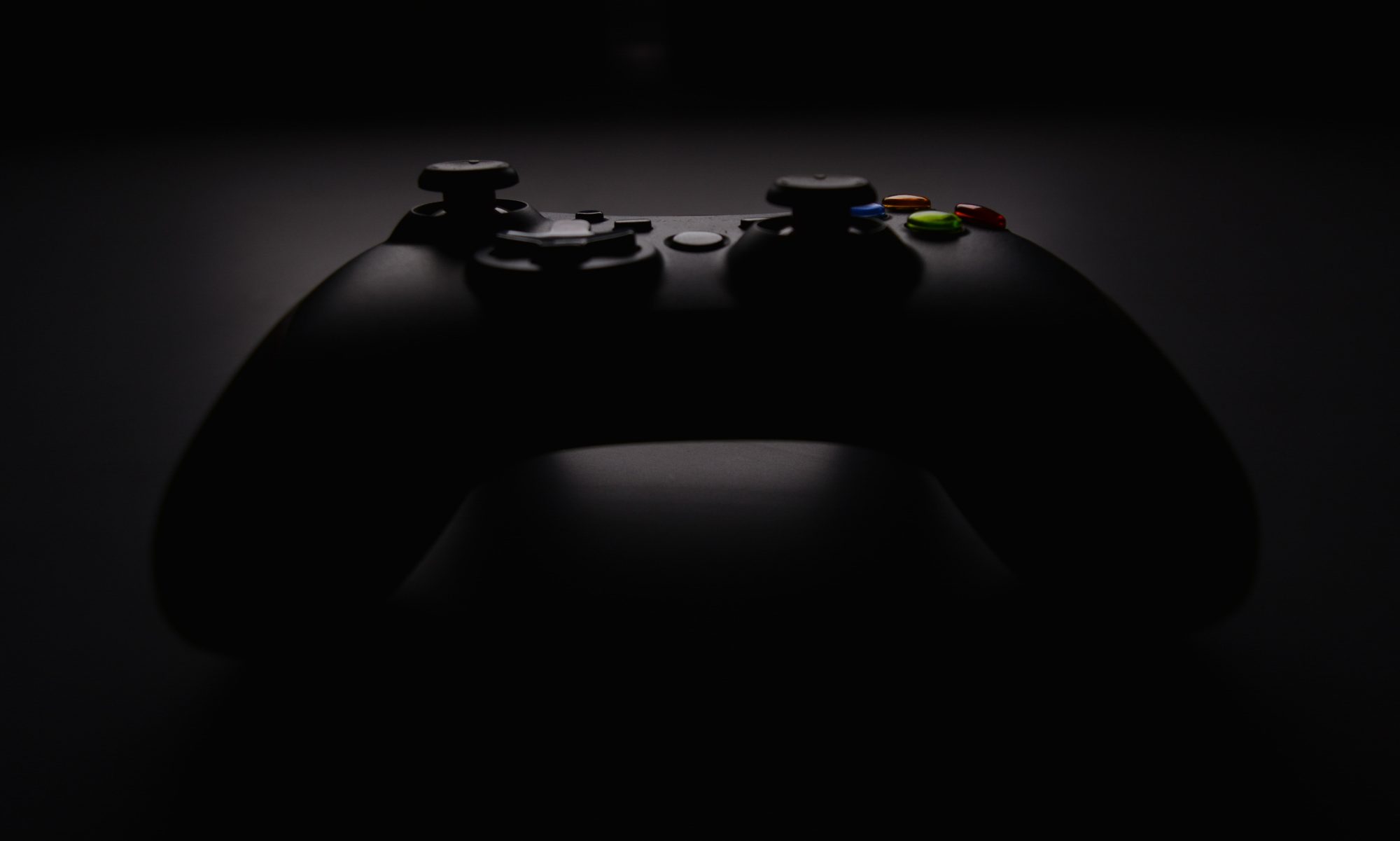Last week, I noticed a problem that when trying to compare what was happening in-game to what was happening in the EEG, it would be very hard to make the two in-sync as they were recorded in separate recordings. My goal for this week was to find a way to show both the game and the EEG recording in one video.
In the end, I found that Streamlabs OBS provided a good solution to this problem. Streamlabs OBS is a popular live streaming and recording software that is used a lot among Youtubers and Twitch streamers. In Streamlabs, you can control what is shown on the screen and where it is shown. I took advantage of this to be able to position the game in the bottom left corner while the EEG would take up the whole screen. This way, there would be a good balance between clearly seeing what’s happening in the game without covering up too much of the EEG.

To test whether this would work or not, I went into the Apex Legends firing range while playing back an old recording in EmotivPRO. This way, it would be easy to test how much can be seen in-game while recording an EEG. The results of this can be seen in this video:
I think that this week’s work proved to be a success, and I’m looking forward to using Streamlabs more in the coming weeks.



